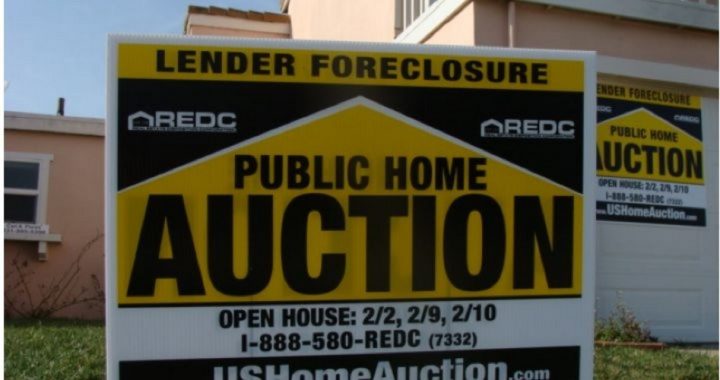
For the first time in more than a decade, Federal Housing Authority (FHA) mortgage delinquency rates spiked upward, rising 72 basis points during the fourth quarter of 2016.
With the pain exacted upon the United States during the Great Recession still fresh, even moderate bad economic news feels like a scab being pulled off an old wound. Mortgage delinquencies of all types reached 11.53 percent during the first quarter of 2010, with nearly 3.6 million completed foreclosures in 2011 — six times the level seen just four years later. Ominously, at 4.15 percent, mortgage delinquencies of all types remain well above the halcyon days of the 1990s and early 2000s.
Is the jump in FHA delinquencies merely white noise or an indicator that bigger problems lie just down the road?
To answer that question, let’s first take a look at the purpose of the FHA and factors driving the housing and financial sectors.
FHA Loans Are Typically for First-time Buyers
Founded in 1934, the Federal Housing Authority provides insurance to incentivize lenders to make certain higher-risk single-family mortgage loans. A key difference between FHA and standard mortgage lending is qualifying criteria: Debt-to-income ratios (factoring in all debt, including the proposed mortgage) can be as high as 43 percent, while down payment requirements can be as low as 3.5 percent. In certain circumstances, the guidelines can be even more generous.
From a credit perspective, the requirements are particularly lenient. In order to qualify for the minimum 3.5 percent down, individual FICO scores can be as low as 500.
The FHA Is the Biggest Mortgage Insurer in the World
Despite the dubious low-end qualifying guidelines — or more accurately, because of them — the Federal Housing Authority is the world’s largest insurer of mortgages, having covered over 34 million properties since its inception.
The FHA’s website discusses the reasons why Congress created the agency:
Congress created the Federal Housing Administration (FHA) in 1934. The FHA became a part of the Department of Housing and Urban Development’s (HUD) Office of Housing in 1965.
When the FHA was created, the housing industry was flat on its back: Two million construction workers had lost their jobs. Terms were difficult to meet for home buyers seeking mortgages. Mortgage loan terms were limited to 50 percent of the property’s market value, wiith a repayment schedule spread over three to five years and endng with a balloon payment. America was primarily a nation of renters. Only four in 10 households owned homes.
With lenders jumping in and out of markets and rife with inconsistencies in underwriting, marketing, and loan terms, Congress acted in an attempt to add stability to an uncertain, patchwork process. It should be noted that the agency is self-funded by fees paid by the homeowners.
So why are FHA delinquency rates up? The answer lies within the tenets of the credit cycle.
The Credit Cycle
Investopedia.com describes the credit cycle as follows:
A credit cycle is a cycle involving the access to credit by borrowers. Credit cycles first go through periods in which funds are easy to borrow; these periods are characterized by lower interest rates, lowered lending requirements and an increase in the amount of available credit. These periods are followed by a contraction in the availability of funds. During the contraction period, interest rates climb and lending rules become more strict, meaning that less people can borrow. The contraction period continues until risks are reduced for the lending institutions, at which point the cycle starts again.
During the initial years after the Great Recession, lending rules tightened dramatically. Regardless of FHA floors, nobody would offer a loan to someone with a credit score in the 500 range. Even low-to-mid 600s would be a stretch.
As the recession disappeared into the rearview mirror, the bad taste faded, and in recent years the appetite for lending returned. As demand rose and competition increased, qualifying standards began to loosen. Unsurprisingly, relaxed lending standards are the reason why delinquency rates have jumped.
FHA Loans Are Not Alone
This phenomenon is not unique to FHA lending. Delinquency rates for all consumer loans ticked upward in 2016, while business loans have experienced an 87 basis point increase over the past two years. At the moment, these trends could simply be aberrations, as past due loans remain at very low levels: artificially low interest rates have virtually guaranteed that most Americans can afford their debt.
However, the credit cycle is an inexorable, irresistible force that first seduces underwriting standards lower and eventually drives interest rates in the opposite direction. We appear to be at that nexus in the cycle where both are happening simultaneously, which explains why FHA and other loan types are seeing a rise in delinquent loan percentages while at the same time lending across most platforms is booming.
What’s Next?
Tepid and unsatisfying as it has been, the economy has now been technically expanding since June 2009. With the average post-WWII expansion lasting just 63 months, this particular version is clearly living on borrowed time.
The evidence strongly suggests the credit cycle is beginning to turn, which means we’re nearing the tail end of the expansion. Whether that means it ends in six months or two years, reducing debt, increasing personal liquidity, and being careful about excessive risk are always excellent ways to prepare for the coming storm.
Photo of house up for auction: Brendel



